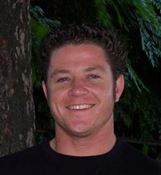Patrick Henning, a Fire Apprentice on the Trabuco RD – Cleveland NF, was killed in a single-vehicle accident last Friday evening (Feb. 29) on his way home from work. He was member of the El Cariso Hotshots this past season and currently worked on the district fuels crew. Our thoughts and prayers go out to Patrick’s family and friends during this difficult time. He will be missed !!!
and:
He was recognized by emergency workers because of his El Cariso Hot Shot shirt, green nomex pants and whites boots he had on.
and:
ORC T43 responded to and extricated USFS Firefighter Patrick Henning after his unfortunate passing as result of a single vehicle traffic accident. He was treated with the full respect of a fallen brother. The picture included is all that needs to be said.
and

Services for Pat Henning will be at Ascension Cemetery, 24754 Trabuco Rd., Lake Forest, CA at 1:00 pm Saturday March 8.
More information about his life, his memorial service, and the funeral can be found on the Pat Henning memorial web site.
Our condolences to Pat’s family, and his extended family. I know the El Cariso Hot Shots must be stunned by this. Some comfort is no doubt obtained by the respectful way the firefighters from the Orange County Fire Authority treated him– as a fallen brother. I didn’t know Pat, but I will never forget the picture of him being carried up the hill through the field of lupine flowers, or him, now. From an El Cariso graduate…Rest In Peace, Pat.
Photo is from the PatrickHenning.com memorial web site.




